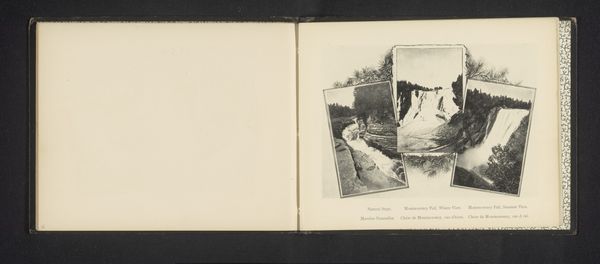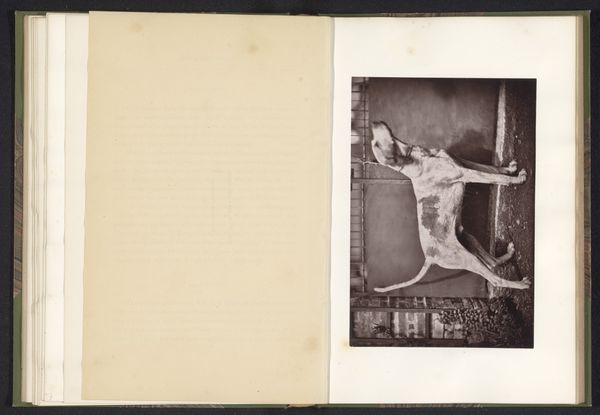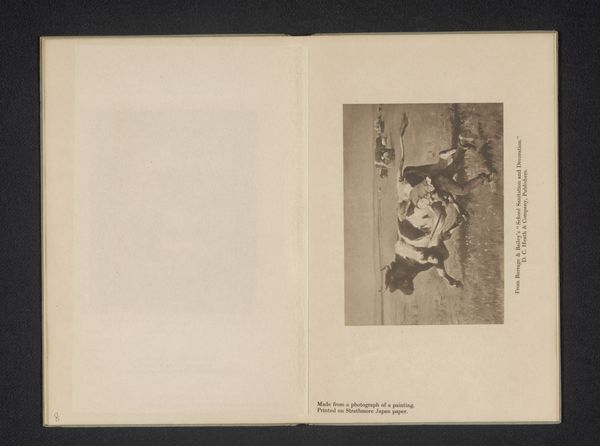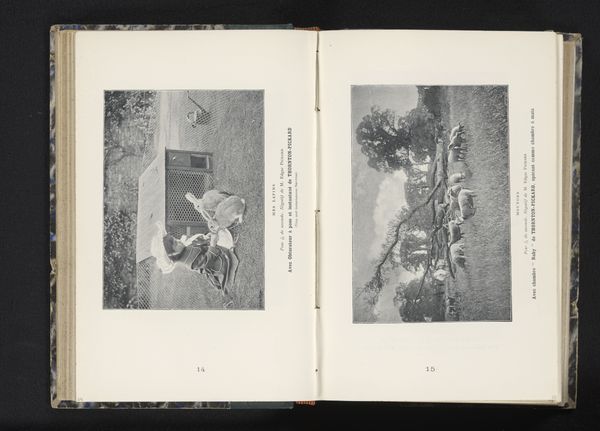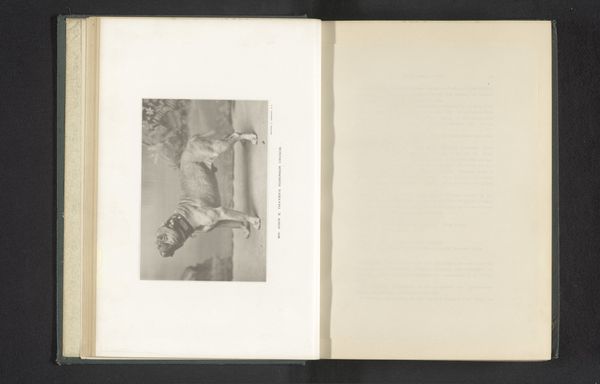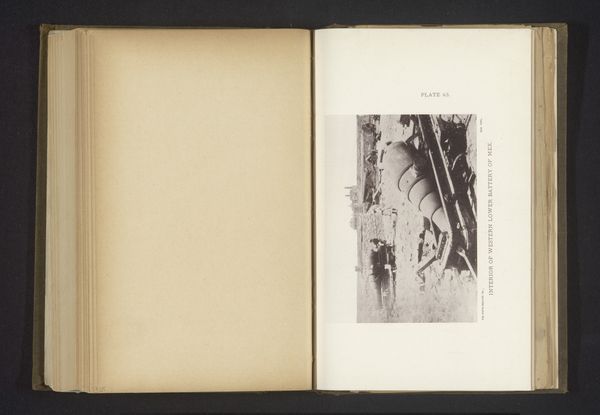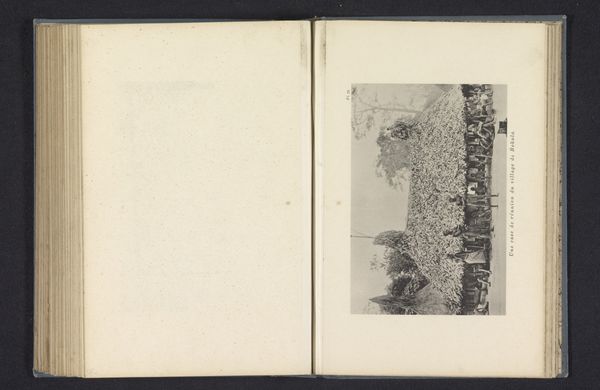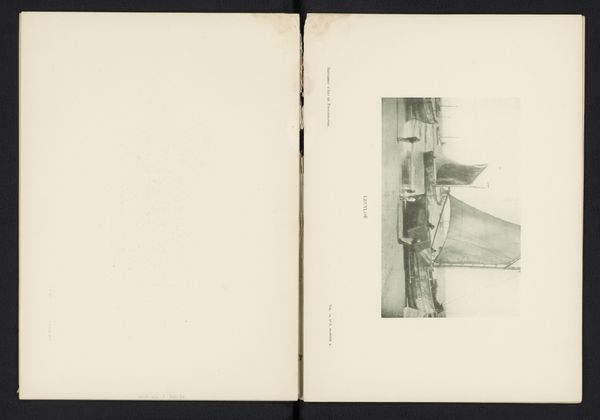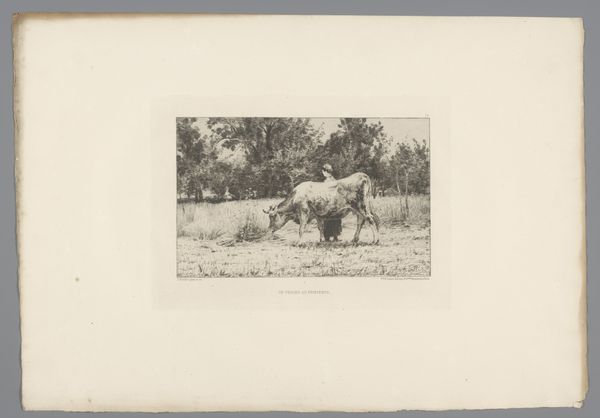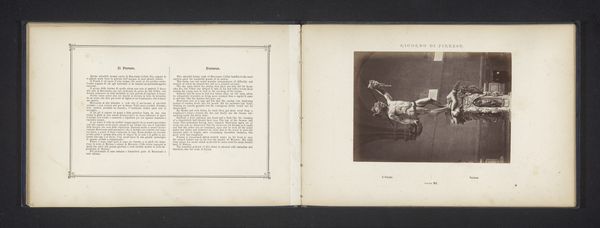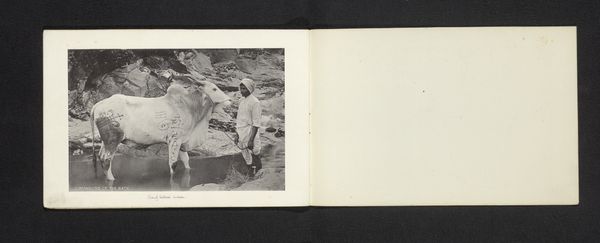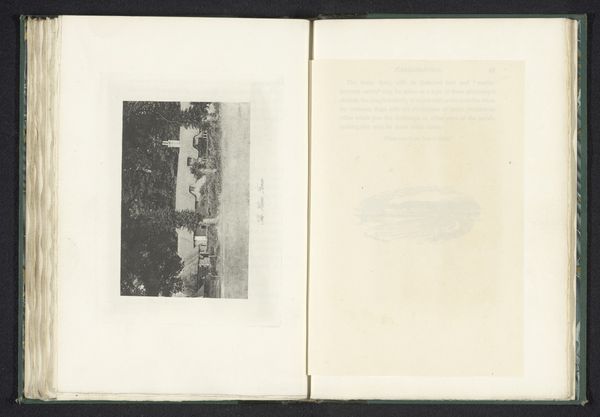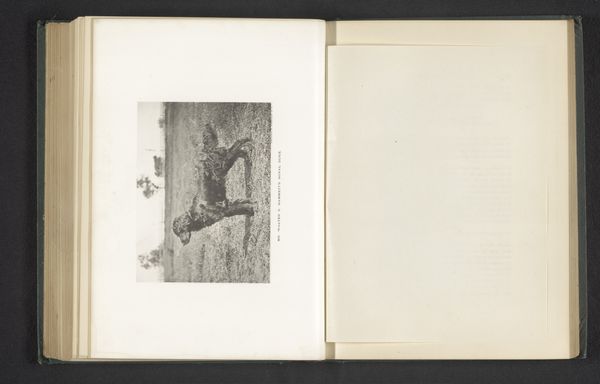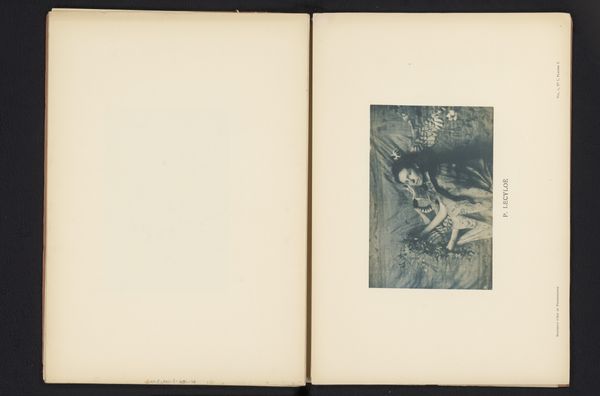
drawing, print, photography
#
drawing
#
animal
# print
#
landscape
#
photography
#
horse
#
sketchbook drawing
Dimensions: height 89 mm, width 138 mm
Copyright: Rijks Museum: Open Domain
Curator: Here we have a photomechanical print from before 1898 titled "Fotoreproductie van een tekening van een paard," or "Photoreproduction of a drawing of a horse," attributed to Wilhelm Cronenberg. What is your initial impression? Editor: It's quite striking! The rearing horse against that dark backdrop has an immediate dramatic effect. I feel a sense of wildness, of untamed energy, almost as if this magnificent creature embodies some suppressed, rebellious spirit. Curator: I see that too. There's something primal about its posture. The rearing stance is very symbolic across cultures—suggesting power, freedom, or even a kind of ecstatic transcendence. It taps into humanity's long relationship with horses as companions, workers, symbols of status. Editor: Exactly! And considering that it's just a photographic reproduction of a drawing makes me consider the act of reproduction and dissemination of power and knowledge. How this image, once an individual work, is now multiplied, shared. Was the original drawing even of a horse Cronenberg actually saw? It makes me consider labor; I think about how images work politically, shaping narratives around our own identities. Is this an attempt at ennoblement, considering the artist or patron perhaps longed for greater prestige through alignment with power? Curator: That’s fascinating. It raises interesting questions about authenticity and representation. What the image gains or loses in translation as it transforms into a symbol through the reproductive act. Maybe this work reflects anxieties of the moment, social structures which in that specific moment began being reproduced—photographically! It creates access to the elite representation, but detaches the horse from direct material labour. Editor: True. Looking closer at the horse’s anatomy and its overall movement...it almost seems to struggle between elegance and chaos, mirroring broader social tensions between established hierarchies and emergent democratic ideals. What a deceptively layered little photograph! Curator: Indeed! I hadn’t considered all those possible connections until now. There is always more to unpack in this old media—the image really is alive. Editor: Agreed. Art gives us frameworks for comprehending cultural trends of social transformation that constantly surround us.
Comments
No comments
Be the first to comment and join the conversation on the ultimate creative platform.
